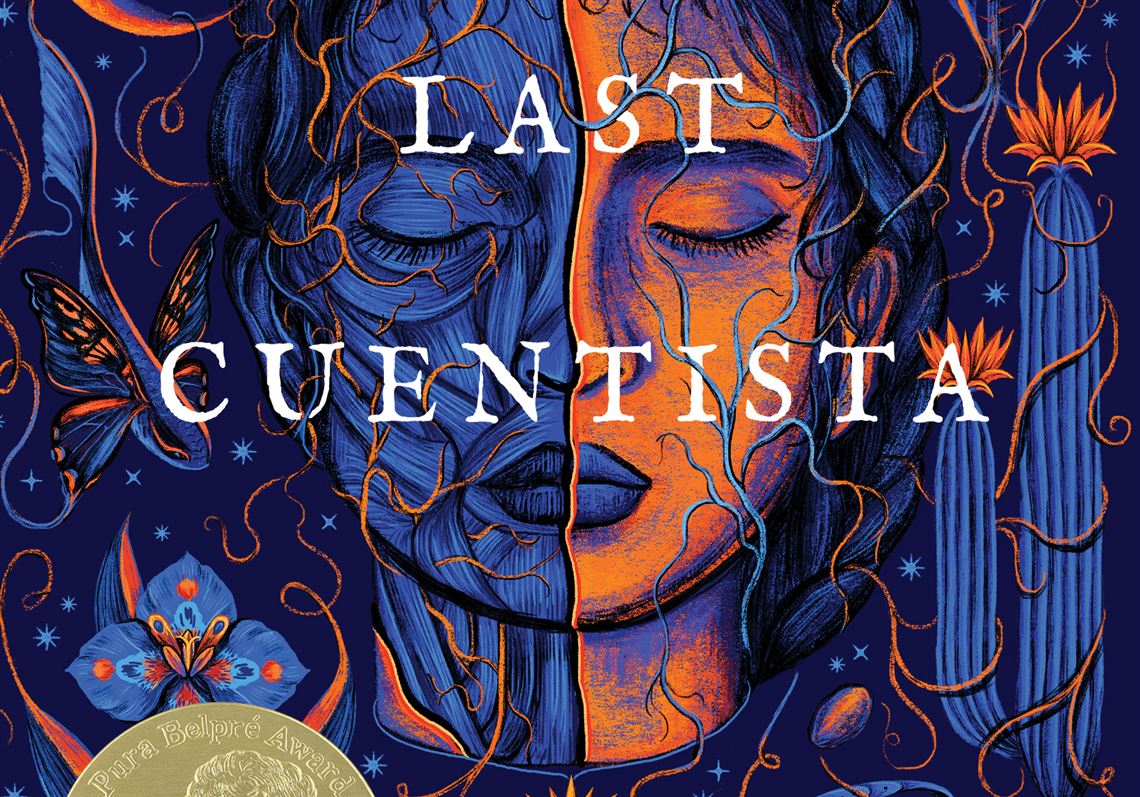There are Mexican-American storytellers in the future, I thought as I read “The Last Cuentista” by Donna Barba Higuera. The thought, a nod to Pittsburgh artist Alisha B. Wormsley’s installation, “There are Black People in the Future,” is also a central point to Higuera’s Newbery Award-winning novel.
In a future intent on erasing all vestiges of individuality — and all traces of our troubled and human past — national and racial identity become crucial anchors to empathy and kindness. Higuera’s heroine discovers that by telling the story, the cuento, of our complicated past, we can learn to build a better future. And with the world as it stands, I’m here for it.
Levine Querido ($12.79)
In the second half of the 21st century, a comet threatens to destroy the Earth. In an attempt to salvage humanity, Petra Peña and her family are among a select group of earthlings chosen to travel through space for hundreds of years in deep cryo-sleep until they arrive at a planet suitable for colonization.
All well and good, except that a cult intent on “erasing history to start anew” infiltrates the crew; and after a few generations, they’ve taken over the ship and removed anyone hostile to their agenda. When Petra wakes up, this menacing group has purged most people’s memories, and she alone carries the stories of our planet. The resulting tale is a thrilling testament to the powers of storytelling.
Petra comes armed with the deep ties she has, via her abuela’s cuentos, to the now-destroyed Earth — to its animals, its literature, and its ancestral knowledge. The stories she’s heard her entire life become integral to her survival. The Last Cuentista combines popular culture with mythology (both classical and indigenous), along with kitchen table remedies to create narrative magic while staying within the confines of what’s possible in the near-future.
But underneath all the great storytelling, there’s something pressing. In a world in which well-intentioned people will claim to “not see color,” it’s important to note the grayness of Higuera’s villains. Color, the novel argues, is essential. When it is completely suppressed, something sinister and cruel emerges.
All human cultures play an important part in defining our world; to see us fully is to see us truly. Characters from various backgrounds make it to “The Last Cuentista’s” future, and all of them have something to say — if Petra can help them remember.
‘The Lost Dreamer’
There are certainly Mexican-American storytellers in the present. Although one can argue that “The Lost Dreamer” by Lizz Huerta, like Higuera’s “The Last Cuentista,” cares little for the here and now. But where Higuera turns to science fiction, Huerta’s novel is grounded deeply in the world of mesoamerican fantasy. Still, both novels feel connected: Huerta’s Indir, a dreamer and storyteller, cares as much about memory, truth and history as Petra Peña.
FSG ($14.99)
Indir has the ability to dream to the truth, but her visions can sometimes be more metaphorical than prophetic. When the priestesses of her temple run afoul of the newly declared King Alcan, Indir must choose whether or not to reveal the dreams she’s been keeping to herself — even if these dreams reveal the end of her kind.
“The Lost Dreamer” also follows Saya, who can step into the dream but has no training, no temple and no personal history. Her mother has kept her on the move, running from place to place her entire life, but as Saya gets older, her visions tell a different story. She begins to suspect that everything she’s ever known has simply been a story, a lie concocted by her mother.
As the two threads converge, “The Lost Dreamer” keeps its secrets close to the chest. There were moments that caught me completely by surprise, a pleasant experience in a genre dominated by cliche. I walked away wanting more, which is great, as Huerta promises a sequel.
The world-building in “The Lost Dreamer” is quite effective. One easily imagines cities filled with meditative water temples, a giant-bird-riding class of warriors and the haunting parallel universe contained in the Dream. The truth is less clear. How does one differentiate between a dream, a metaphor and a harbinger of what’s to come?
Indir and Saya, like Petra Peña, look to the people that surround them for help. A good story can motivate anyone to action. There is great power, after all, in being the teller. Whether preserving a history or unearthing a greater meaning, the smallest anecdote can save a people or catalyze chaos. We don’t have to look into the future to see that.
Both novels are aimed at younger readers. “The Last Cuentista” is for middle-schoolers while “The Lost Dreamer” qualifies as Young Adult, which makes sense. With so much technology designed to disseminate every possible thought, it’s hard to know which story matters. Perhaps the answer lies in our families, in our communities, in our past — if we remember.
Adriana Ramirez is an award-winning writer living in Pittsburgh.
First Published: April 19, 2022, 10:00 a.m.

















